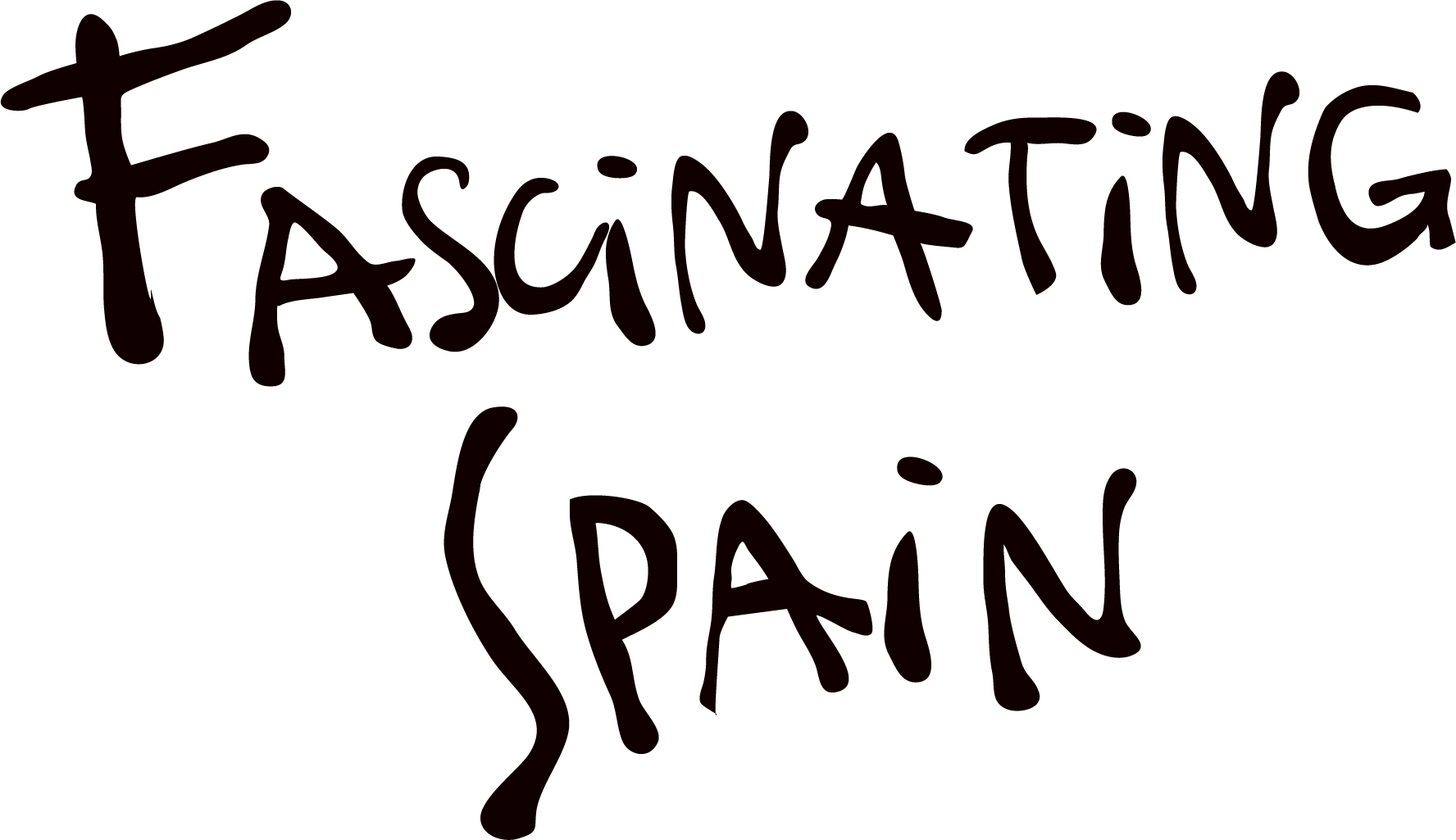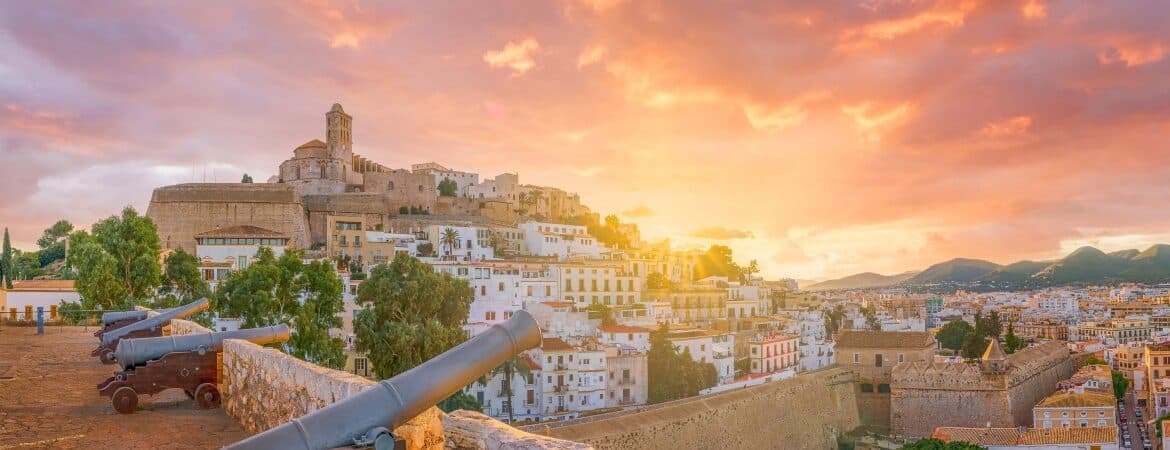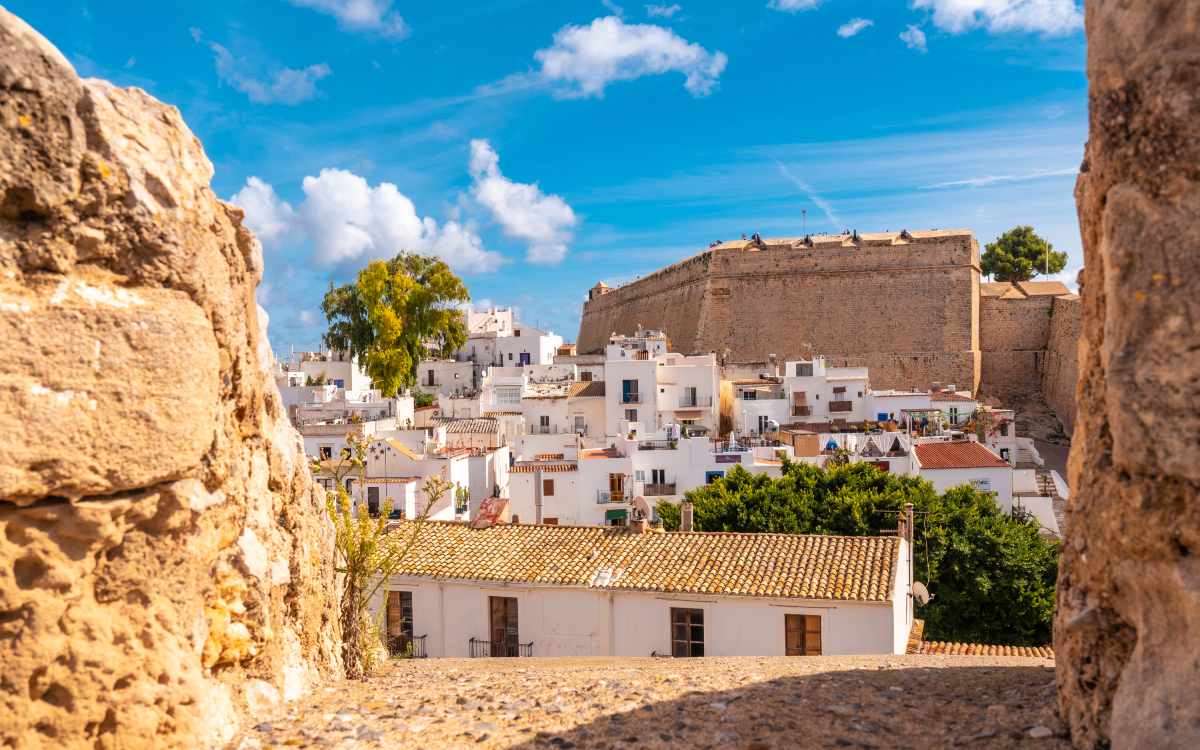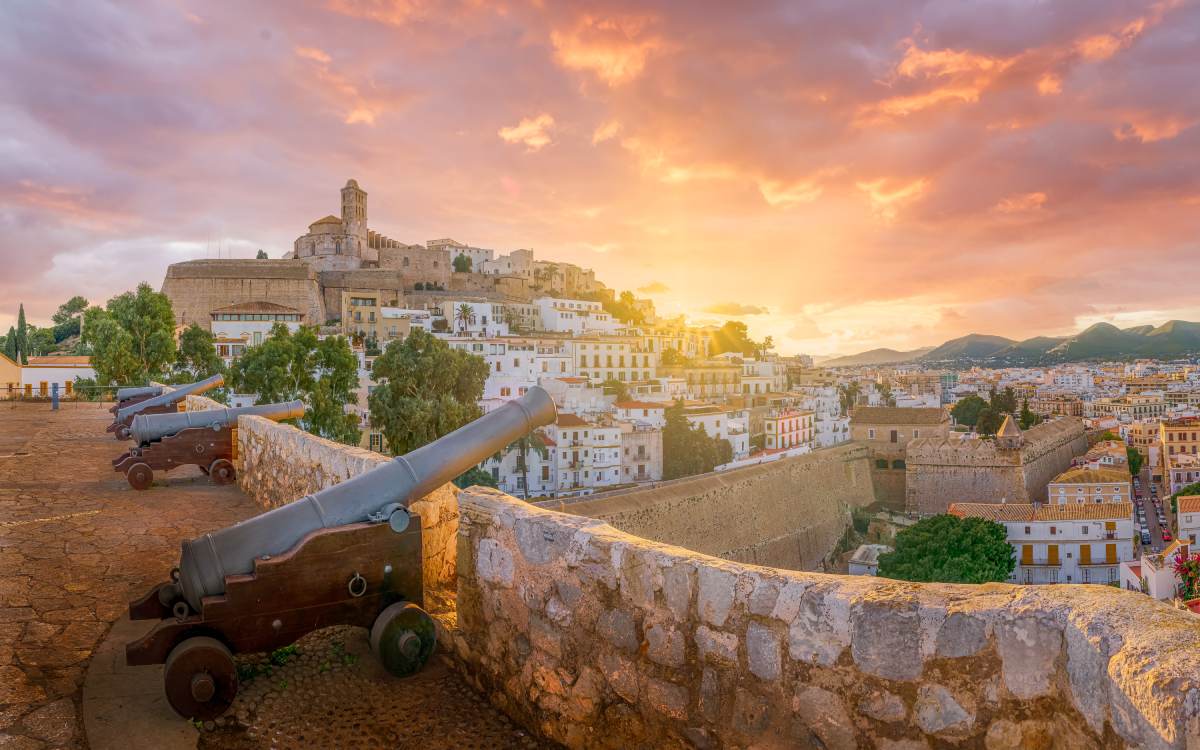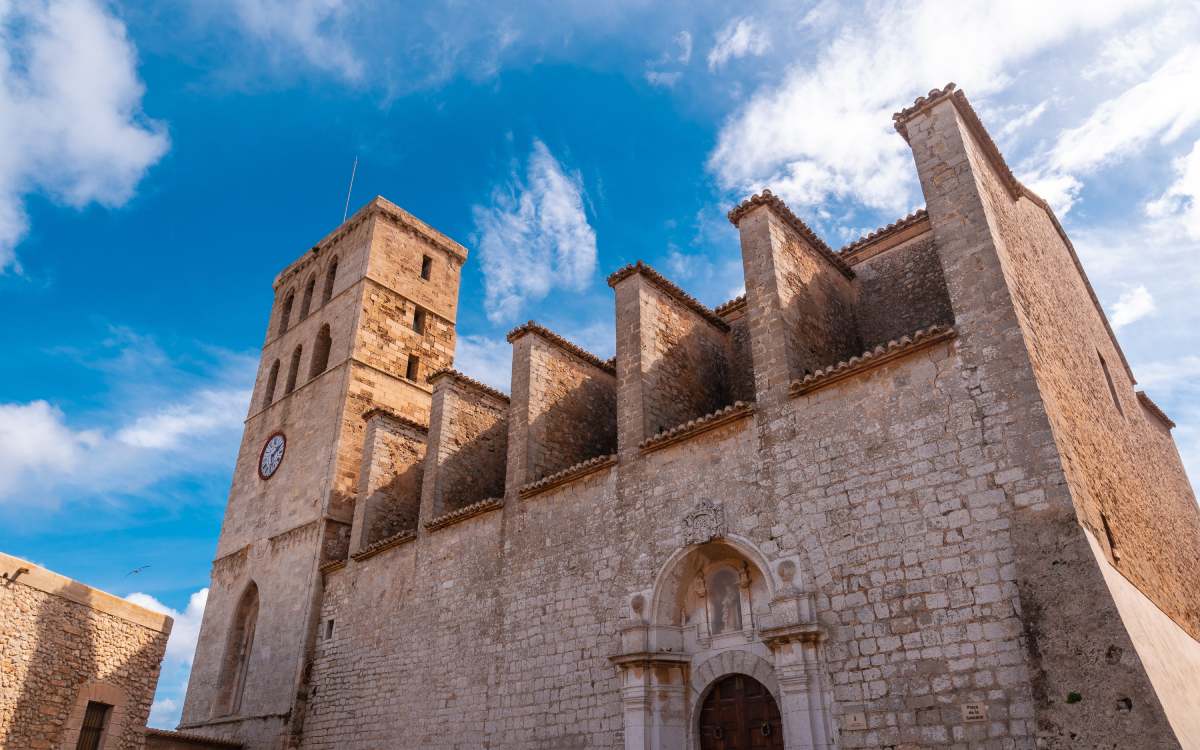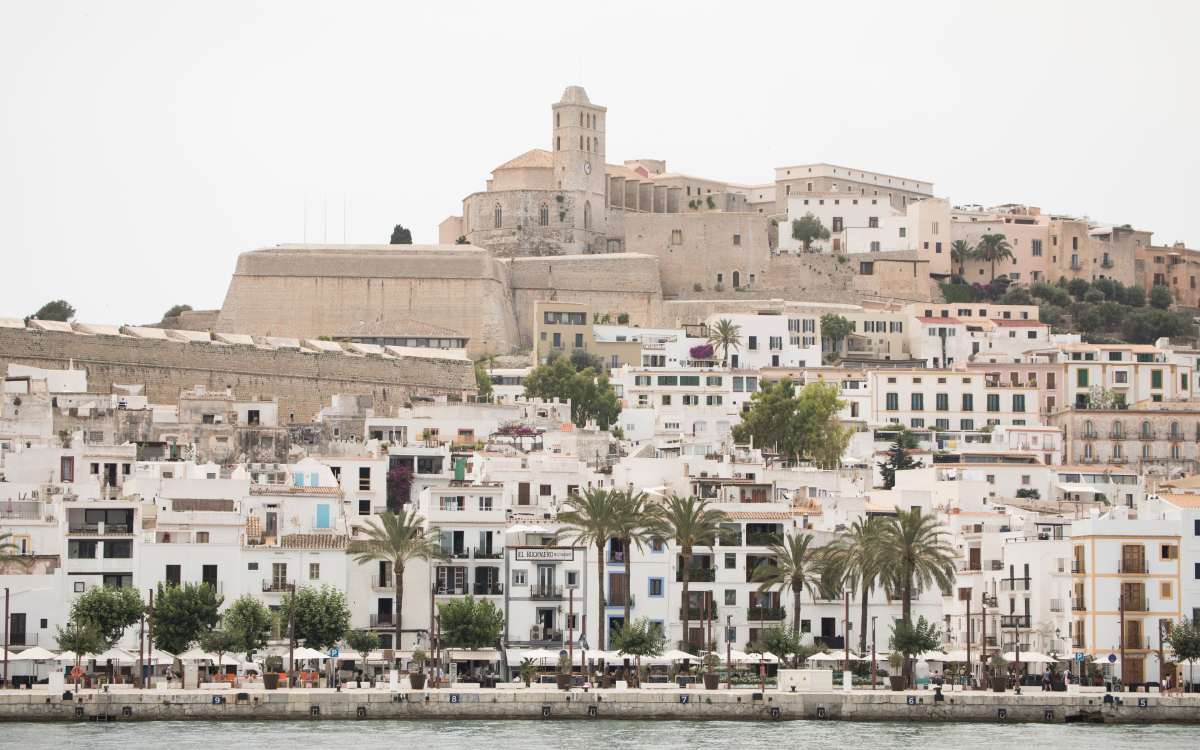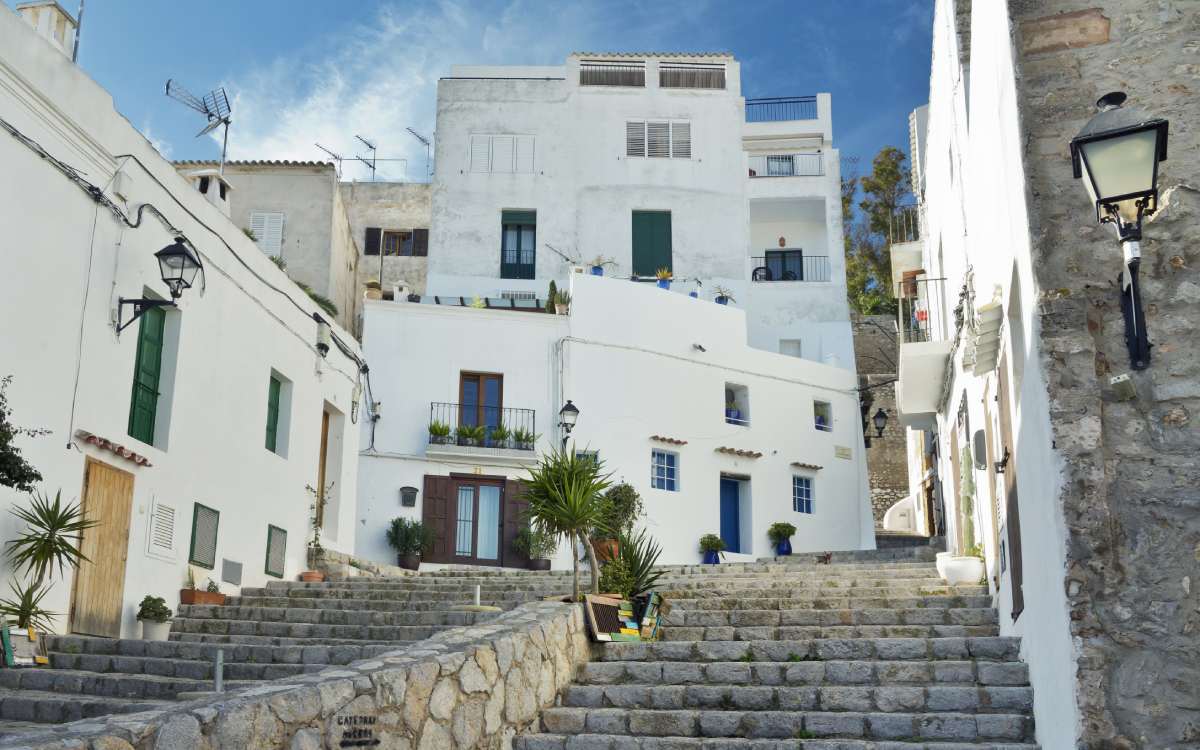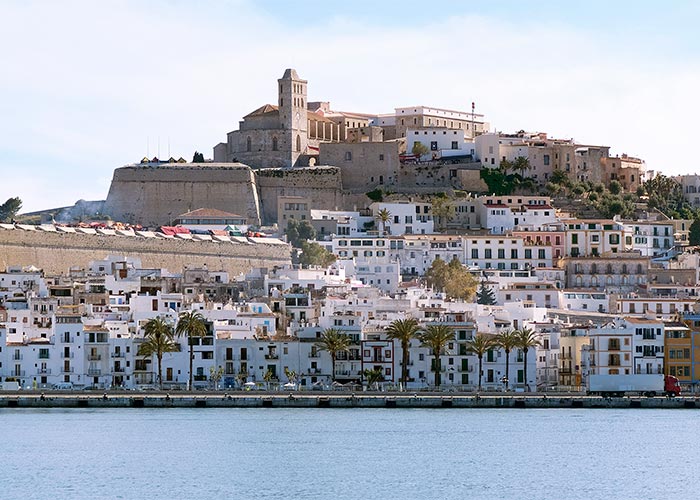Though the most note worthy from Dalt Vila, and the best on this travel guide to Ibiza, is the tallest part of the city. Here you can find the Cathedral of Saint Mary and the Almudaina Castle. The space is the core center of the city. It takes up the highest point of the city, chosen as theworship place by various civilizations a long the centuries. The cathedral is still situated in the place of the ancient Church of Sain Mary, from the XIII century. In it´s time, it was edificated over an ancient mosque and was made larger from the XIV to XVIII century. In all cases, it always maintained a generally gothic look. The exterior of the temple stands out for it´s sobriety and robustness of its buttresses. Lets continue on this travel guide.
In exchange, the interior is a barrocan style and counts with important works of art. A lot of which are exposed in the Diocesano Museum, with access from the same temple. As well as in the Cathedral Plaza, you can find the Museu Arqueològic d’Eivissa i Formentera. This space exposes art from the historic and archeological parts from the Pytiusic Islands from different eras. The areas explored are the prehistoric, Phoenician, Carthaginian, Roman, and Medieval Islamic. As far as the castle, it is a rectangular shape with towers on each corner. Remember the structure of the qars, fortified Islamic structures. In the south side you can find the Governors House, along with residences of the Government representatives. Based on what chronicler Ramón Muntaner tells, in the castle is where King Alfonso III of Aragón resided in 1286.
There are many other interesting neighbourhoods to see in Ibiza. Sa Penya is the old fishers port, situated betweern the port and the walls of Dalt Vila. It is formed of stretched laborynthic streets and white colored homes. It has a certain level of degradation, which is a pity. If it would be really taken care of and dynamized, it could be a great symbol of the city, being a distinctive neighborhood. The houses with the stile built there and distinctive corners make it a singular place in this travel guide.
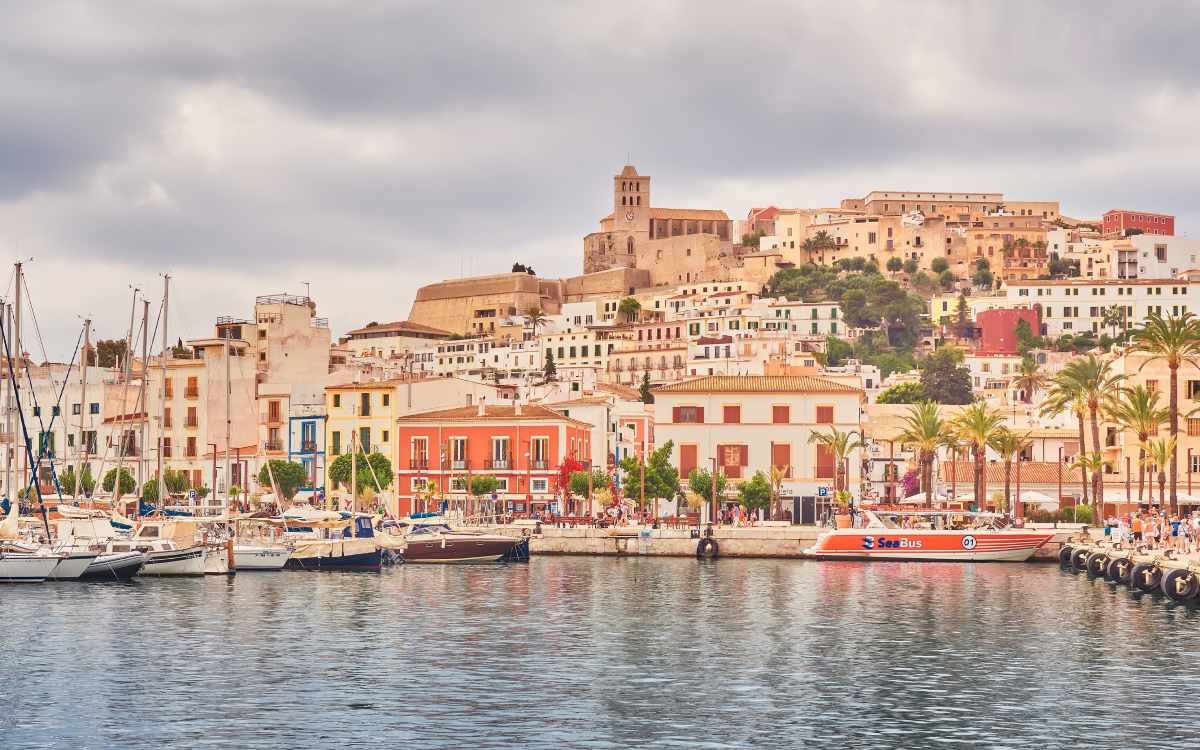
The port of Ibiza. | Shutterstock
Sa Marina, to the North of the Blulwark of Saint John, is the one that hosts the most popular shops and the Pereyra Theater, a known restaurant-bar with live music. The Port is another frequented place, the true marine face of the neighborhood. You will no miss any fancy yachts in this place, due to the many around. In this zone of Sa Marina the surprising Monumento a los Corsarios is also located. It is worth nothing that this tribute is for a local. There is a multitude of bars, restaurants, and souvenir stores in this place to remember where you visited on this travel guide.
The Ensanche has as a neuralgic point the Passeig of Vara of the King, vital zone with cafeterias and restaurants. Another that stands out is the Mercat des Peix(Fish Market) and the Mercat de ses Verdures (Vegetable Market). From there you can start the climb to Portal de ses Taules, which is the entrance to Dalt Vila.
Closing on this travel guide to Ibiza,on the exterior is located the Yacimiento of Puig des Molins. It has this name due to the olives and mills that were located ther in the XIX century. After diverse excavations in the hill, more than 4000 graves were discovered, which showed that before it being an olive grove it was a necropolis from the Roman and Phoenician era. After these findings the Museu del Puig des Molins, where you can enjy many of the pieces recovered from the extractions: necklaces, arms, coins, jewels, and even sarcophagus.
Because of all of this, the visitor must have in mind that the trip to Ibiza is more that just sun, beaches, and never ending parties. Which are elements that are always focused about the city.There are many cultural and historic places to explore and see in this travel guide to Ibiza.
